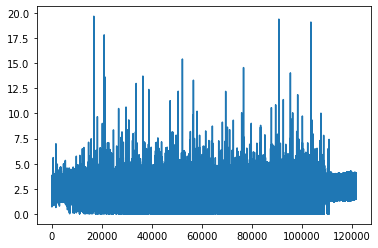I’m trying to use transfer learning to classify facial emotions on the FER2013 dataset from kaggle. I resized the images to 224x224 and converted them to 3 channel grayscale images. While training, there seems to be no progress at all and the loss function graph doesn’t look right either. Is there anything wrong I’m doing? (I’m relatively new to deep learning)
model = torchvision.models.vgg16(pretrained=True)
#model summary
print(model)
# freezing parameters for pretrained VGG16
for params in model.parameters():
params.require_grad = False
#number of features in penultimate classifier layer
num_feature = model.classifier[6].in_features
model.classifier[6] = nn.Sequential(
nn.Linear(num_feature, 256), nn.ReLU(), nn.Dropout(0.2),
nn.Linear(256, 7))
for params in model.classifier.parameters():
params.require_grad = True
model = model.to(device)
print(model)
criterion = nn.CrossEntropyLoss()
optimizer = optim.Adam(model.parameters())
epochs = 10
loss_log = 100
LOSS = []
for epoch in range(epochs):
epoch_correct = 0
print(f"Epoch: {epoch+1}/{epochs}")
for idx,(x,label) in enumerate(x_train_data):
x = x.to(device)
label = label.to(device)
optimizer.zero_grad()
out = model(x)
loss = criterion(out,label)
if (idx+1)%loss_log == 0:
print(f"log loss at {idx}: {loss}")
LOSS.append(loss)
loss.backward()
optimizer.step()
Here’s the graph:
